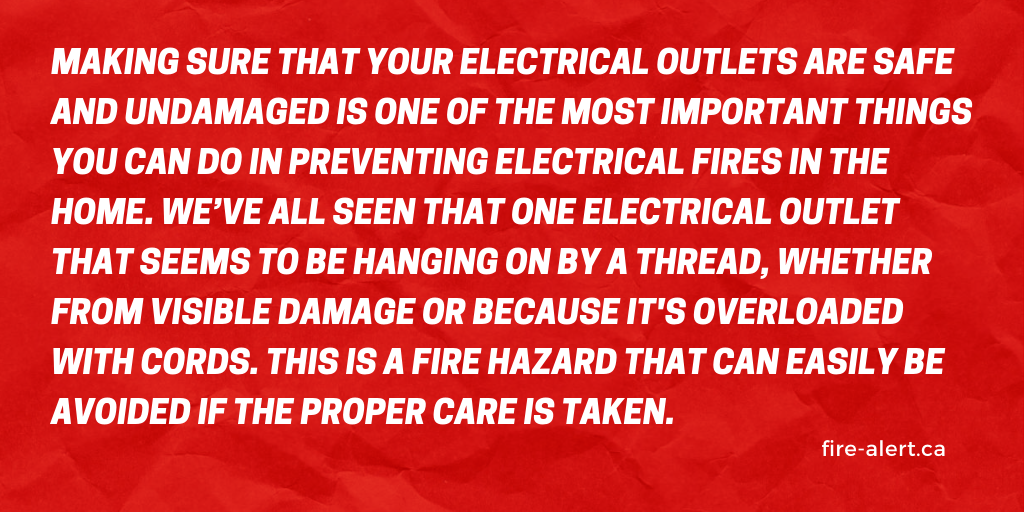3 Tips For Preventing Electrical Fires at Home
According to the EFSI, home electrical fires account for an estimated 51,000 fires each year. These devastating fires have resulted in nearly 500 deaths, more than 1,400 injuries and $1.3 billion in property damage. When we think of electricity in our homes, we usually only think of the electrical appliances we can see. However, electricity runs through our walls, to the corners of our kitchen cabinets, making potential harm from electricity in the home high. The good news is that electrical fires are often preventable and can be avoided by doing your research and by showing care. In this article, we take a look at 3 tips for preventing electrical fires at home, so you can have peace of mind that you’re not putting your own and your family’s safety at risk.
Make Sure Your Electrical Outlets Are Safe

Making sure that your electrical outlets are safe and undamaged is one of the most important things you can do in preventing electrical fires in the home. We’ve all seen that one electrical outlet that seems to be hanging on by a thread, whether from visible damage or because it’s overloaded with cords. This is a fire hazard that can easily be avoided if the proper care is taken.
Platinum Electricians explains more on what you should look for when it comes to damaged or overloaded electrical outlets:
“Worn-out or faulty outlets are one of the most common causes for electrical fires in the home. Inspecting these electrical sources in your home for damage or deterioration helps to reduce the risk of electrical fires. When conducting these inspections, be on the lookout for worn or frayed cables, overloaded power sockets or power boards. Secondly, note the location of the electrical cords, if they are near sources of heat and water, try moving them away from these areas to avoid any accidental harm.”
Never Cut Off The Third Prong On A Power Cord
If you only have two prong outlets in your home, it may be tempting to simply cut off the third prong and see if it’ll still work in the same way. This is a very obvious fire hazard and should never be attempted, as the third prong is included for a reason.
Economical.com tells us why the third prong is present on a power cord and what you can do in order to use it safely:
“The third prong (also known as the “ground”) is there for a reason: to protect you in the event of a power surge or other electrical malfunction. If your home only has two-prong outlets, consider having an electrician inspect your home’s electrical system to see if they can update your outlets to three-prong ones.”
Check Your Light Fixtures
You may not think to check your wattage when replacing a light bulb in your light fixture, thinking it can’t make that much of a difference. In reality, the wattage is listed on both your light fixture and on replacement light bulbs for an important reason.
FireRescue1.com explains more about bulb wattage and not taking care to use the correct bulbs can easily result in an electrical fire:
“Light fixtures, lamps and light bulbs are another common reason for electrical fires. Installing a bulb with a wattage that is too high for the lamps and light fixtures is a leading cause of electrical fires. Always check the maximum recommended bulb wattage on any lighting fixture or lamp and never go over the recommended amount. Another cause of fire is placing materials like cloth or paper over a lampshade. The material heats up and ignites, causing a fire. Faulty lamps and light fixtures also frequently result in fires.”
Fire-Alert takes pride in equipping homeowners, commercial businesses and government buildings with all necessary fire safety devices to ensure the well-being of families and employees across the nation. Reach out to us using our contact form to find out more.